
Andrea Barton-Hulsey
Florida State Universityabartonhulsey@fsu.edu
I am a faculty member at Florida State University in the School of Communication Science and Disorders. My PhD is in Developmental Psychology, and I worked as a Speech-Language Pathologist for 7 years prior to returning for a PhD. My current research is focused on 1) Characterizing intrinsic and extrinsic factors related to reading outcomes in children with intellectual and developmental disabilities; 2) Developing assessment tools and interventions that support reading development for children with intellectual and developmental disabilities who may also use speech generating AAC systems. I’m very interested in the role that speech generating AAC devices play in language and reading development for children with intellectual disabilities who may or may not use speech, and how we can harness this technology to support equitable access to reading instruction and joint engagement with peers, teachers, SLPs and parents.
Barton-Hulsey, A., Lorang, E., Renfus, K., & Sterling, A. (2020). Maternal input during book reading in children with Down syndrome. American Journal of Speech-Language Pathology, 29(3), 1475 – 1488.
Barton-Hulsey, A., Phinney, S., Collins, S. (2021). Augmentative and alternative communication supports for language and literacy in preschool: Considerations for Down syndrome and autism spectrum disorder. Seminars in Speech and Language, 42, 345-362.
Barton-Hulsey, A., Sevcik, R., Romski, M. A., & Collins, S. (2022). Home and school literacy experiences of preschool-age children with developmental disabilities. Perspectives of the ASHA Special Interest Groups, 7, 1585-1605. DOI: 10.1044/2022_PERSP-22-00026

Sofia Benson-Goldberg
University of North-Carolina at Chapel Hillsofiabg@med.unc.edu
My background is as a speech-language pathologists working with children, adolescent, and young adult AAC users. I am new to researching through the social interaction, conversation analysis lens, but I am interested in the ways that it can help re-conceptualize how we assess communication, as well as insights about how AAC users are navigating in-person communication. As a member of the Project Open research team I am interested in how we can develop new AAC interfaces, and trial them with AAC users, to understand the extent to which iterating on user interfaces changes in-person interactions.
Benson-Goldberg, S., Geist, L., & Erickson, K. (2023). Project Open: Design of an Open-Source AAC Research and Development Platform. Assistive Technology Outcomes and Benefits, 17(1), 31-44. https://www.atia.org/atob-volume-17/
Benson-Goldberg, S., Geist, L., & Erickson, K. (2022). Communication growth overtime: A longitudinal analysis of the Project Core implementation model pilot data. Communication Disorders Quarterly. 00(0), 1-9. https://doi.org/10.1177/15257401221120790

Jenna Bizovi
The State University of New York At Buffalojbizovi@buffalo.edu
Jenna is the Assistant Director at the Communication and Assistive Device Laboratory (CADL) at the University at Buffalo. Bizovi is an expert in human factors engineering and human-technology-interaction. She has significant experience in directing teams of individuals with diverse backgrounds in research and technology development. In addition to her research work on the project, Bizovi is also responsible for directing student researchers and engineers on collaborative R&D projects.

Steven Bloch
University College Londons.bloch@ucl.ac.uk
I’m a Professor in Communication and Social Interaction at University College London. As a speech and language pathologist I specialised in working with people with progressive degenerative communication disorders in community settings. Using conversation analysis my research focuses on understanding the impact of communication disorders and AAC use on the social interaction of adults with motor neurone disease, Parkinson’s and multiple sclerosis. I’m currently running a project to develop an online conversation based approach for people living with Parkinson’s. You can read more about my research and publications at www.ucl.ac.uk/pals/people/steven-bloch. You can find me on Twitter @steven_bloch
Bloch, S. & Barnes, S. (2020) Dysarthria and other-initiated repair in everyday conversation. Clinical Linguistics and Phonetics, 34 (10-11) 977-997
Bloch, S., Wilkinson, R. (2013) Multiple troubles and repair in voice output communication aid-mediated interaction. In Norén, N., Samuelsson, C., Plejert, C. (Eds.). Aided Communication in Dialogical Perspectives. Augmentative and Alternative Communication as Action and Participation within Embodied Social Worlds. Chapter 4 pp. 95-126. J&R Press.
Cave, R. & Bloch S. (2021). Voice banking in MND: Views and Experiences. International Journal of Language and Communication Disorders, 56 (1) 116-129

Richard Cave
University College Londonrichard.cave.17@ucl.ac.uk
Richard Cave is a Speech and Language Therapist (SLT) based in the UK, PhD candidate at UCL, national adviser to Royal College of Speech and Language Therapists and recipient of the 2022 Allied Professional award from the International Alliance of ALS/MND Associations. Richard provides specialist SLT consultancy to the Google Relate and Euphonia projects – these programs focus on improving automated speech recognition (ASR) accuracy for recognizing dysarthric speech, the goal is for people with dysarthric speech due to any condition to be better understood by others. He also works with the MND Association the leading non-profit for MND/ALS in the UK, providing training and practical support for AAC, voice banking and communication technology. Richard’s PhD is focused on understanding how people living with MND/ALS and significant communication partners use Google Relate to support everyday spoken conversation. And to better understand how a progressive decline in speech intelligibility may change the practical use of Relate to support spoken conversation. Prior to SLT qualification, Richard worked in the IT industry for 18 years.
Cave R, Bloch S. The use of speech recognition technology by people living with amyotrophic lateral sclerosis: a scoping review. Disabil Rehabil Assist Technol. 2021 Sep 11:1-13. doi: 10.1080/17483107.2021.1974961. Epub ahead of print. PMID: 34511007.
Cave, R. and Bloch, S. (2021), Voice banking for people living with motor neurone disease: Views and expectations. International Journal of Language & Communication Disorders, 56: 116-129. https://doi.org/10.1111/1460-6984.12588
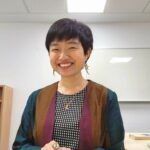
Rachel Chen
Nanyang Technological Universityrachelchen@ntu.edu.sg
I have spent my research journey conducting video- and micro-analyses of the embodied interactions of non-speaking autistic individuals across a variety of settings. I came to think about augmentative communication quite naturally from working in this area, and in my spare time, began pursuing a parallel journey, tinkering with the design of communicative systems. In my more recent work, I began integrating the design and development of technologically-mediated tools for communication with video- and micro-analyses of social interaction. My work aims to change the environment of the interactants so that their rich multisensorial interactions may be surfaced.
Chen, R. S. Y. (2022). Being Non-speaking in a Speaking World: Surfacing the Improvisations of Autistic Individuals (Doctoral dissertation, University of California, Berkeley). Chen, R. S. Y. (2022).
Improvisations in the embodied interactions of a non-speaking autistic child and his mother: practices for creating intersubjective understanding. Cognitive Linguistics, 33(1), 155-191.

Yoo Sun Chung
George Mason Universityychung3@gmu.edu
I am Yoosun Chung, an associate professor in the Assistive Technology (AT) program within the Division of Special Education and disAbility Research at the College of Education and Human Development at George Mason University. My teaching focuses on Special Education and AT, including Augmentative and Alternative Communication (AAC). I am the recipient of the Edwin and Esther Prentke AAC Distinguished Lecture Award from American Speech-Language-Hearing Association (ASHA) in 2017 and WORDS+/ISAAC Outstanding Consumer Lecture Award from the International Society for AAC (ISAAC).
As the past president of the United States Society for AAC (USSAAC), I am actively involved in promoting AAC and advocating for individuals who use AAC and those with speech difficulties. Drawing from my personal experience as an AAC user, I am deeply committed to improving the quality of life for individuals in these communities. I have been involved in several AAC-related projects that further contribute to this mission.

Michael Clarke
San Francisco State Universitymichaelclarke@sfsu.edu
I am a Speech Language Pathologist (SLP) and an Assistant Professor in the Department of Speech, Language and Hearing Sciences, San Francisco State University. My area of professional expertise is in augmentative and alternative communication (AAC). My research in the area of AAC is motivated by questions arising from clinical practice and is rooted in close collaboration with families, SLPs, teachers, paraprofessionals and occupational therapists. I have a particular interest in in-person multi-modal interaction involving children who are provided with AAC systems and tools. I have experience is using the principles and practices of conversation analysis and other qualitative methods to examine interaction involving AAC use.
Clarke, M.T., Wilkinson, R. (2013) Communicative competence in children’s peer interaction. In Norén, N., Samuelsson, C., Plejert, C. (Eds.). Aided Communication in Dialogical Perspectives. Augmentative and Alternative Communication as Action and Participation within Embodied Social Worlds London: J&R Press
Clarke, M.T., Wilkinson, R. (2010) Communication aid use in children’s conversation: Time, timing and speaker transfer. In Gardner, H., Forrester, M. (Eds.). Analysing interaction in childhood: Insights from conversation analysis. London: Wiley.
Clarke, M.T. & Wilkinson, R. (2008) Interaction between children with cerebral palsy and their peers 2: Understanding initiated VOCA mediated turns. Augmentative and Alternative Communication, 3-15

Karen Erickson
University of North Carolina at Chapel Hillerickson@unc.edu
I am the Director of the Center for Literacy & Disability Studies at the University of North Carolina at Chapel Hill where I am also a professor in the Division of Speech & Hearing Sciences and the Yoder Distinguished Professor. My work centers on literacy and communication for children (2-21) with a range of extensive support needs, typically including complex communication needs, intellectual disabilities, and sensory impairments. Though I have a long history of work in the areas of assistive technology and AAC, work on social interactions mediated by AAC technologies is a relatively new area of interest.
Benson-Goldberg, S., Geist, L. A., & Erickson, K. A. (2022). Expressive communication over time: A longitudinal analysis of the Project Core implementation model. Communication Disorders Quarterly. https://doi.org/10.1177/15257401221120790
Quick, N., Yi, J. J., & Erickson, K. A. (2022). Teacher extratextual talk during shared reading with students with extensive support needs. Exceptionality. https://doi.org/10.1080/09362835.2022.2100389
D’Ardenne, C., Erickson, K. A., Noblit, G., Koppenhaver, D. A., & Clark, N. (2021). The discursive construction of severe dis/ability in school. In J. N. Lester (Ed.), Discursive Psychology & Disability (pp.113-142). Palgrave Macmillan.
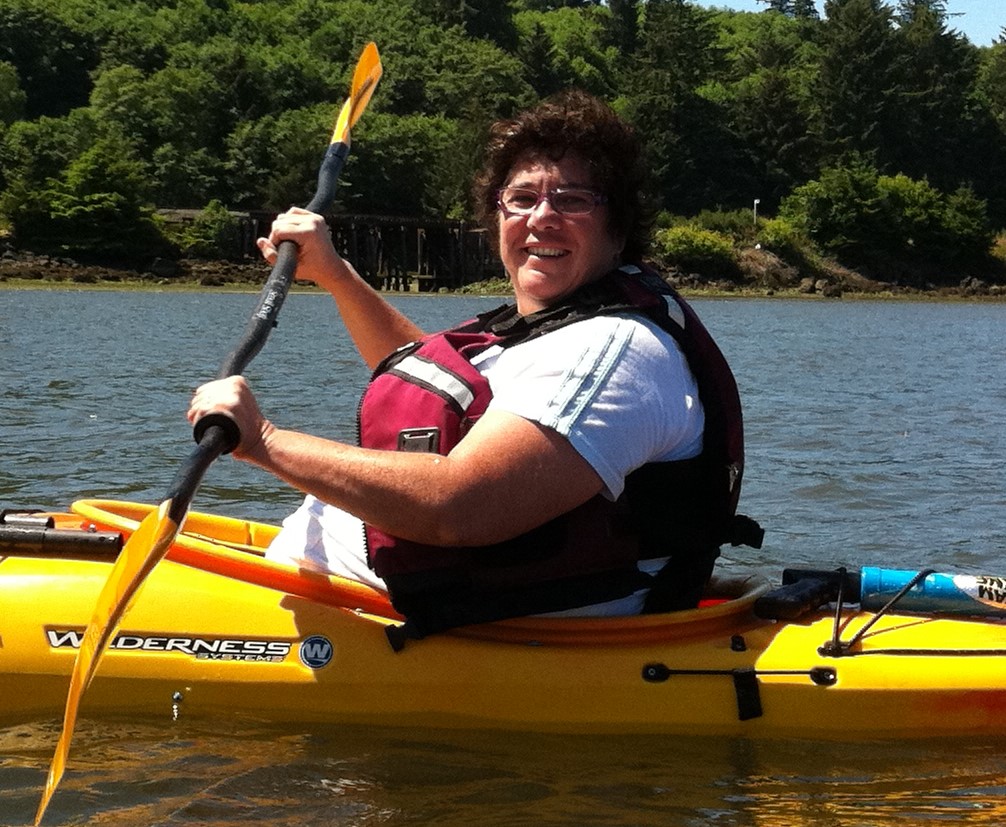
Melanie Fried-Oken
Oregon Health and Science Universityfriedm@ohsu.edu
I am a research speech-language pathologist and have been working in the field of AAC since 1979. My greatest passion is to identify gaps in current AAC practices and technologies for people with complex communication needs and to develop ways to help people participate to their greatest potential. I currently run a federally funded, multidisciplinary lab for the research and development of non-implantable brain-computer interfaces for communication. We have a strong foundation in participatory action research (including end-users in all stages of research), user-centered design, and team science.
Klein, E., Kinsella, M., Stevens, I., & Fried-Oken, M. (2022). Ethical issues raised by incorporating personalized language models into brain-computer interface communication technologies: a qualitative study of individuals with neurological disease. Disability and Rehabilitation: Assistive Technology, 1-11.
Peters B, Eddy B, Galvin-McLaughlin D, Betz G, Oken B and Fried-Oken, M. (2022) A systematic review of research on augmentative and alternative communication brain-computer interface systems for individuals with disabilities. Front. Hum. Neurosci. 16:952380. doi: 10.3389/fnhum.2022.952380
Fager, S. K., Fried-Oken, M., Jakobs, T., & Beukelman, D. R. (2019). New and emerging technologies for adults with complex communication needs and severe motor impairments: State of the science (Special Issue]. Augmentative and Alternative Communication, 35(1). DOI: 10.1080/07434618.2018.1556730
Mooney, A., Bedrick, S., Noethe, G., Spaulding, S., & Fried-Oken, M. (2018). Mobile technology to support lexical retrieval during activity retell in primary progressive aphasia. Aphasiology, 1-27. DO1: org/10.1080/02687038.2018.1447640

Lori Geist
University of North Carolina at Chapel Hilllageist@unc.edu
Lori is an assistant professor at the Center for Literacy and Disability Studies in the Department of Allied Health Sciences at the University of North Carolina at Chapel Hill. Prior to joining the research faculty at UNC, she worked in direct service, consultation, and product development, with her efforts concentrated on intervention approaches that target communication, language, and literacy outcomes for individuals with complex communication needs. Her research interests center on leveraging technology in the delivery of effective intervention. She is currently a co-PI on multiple federally funded research and development projects.
Quick, N., Geist, L., Erickson, K. (2022). Interaction during robust receptive vocabulary instruction in AAC: A conversational analysis. American Speech-Language Hearing 2022 Convention, New Orleans, LA.
Geist, L., & Erickson, K. (2022). Robust Receptive Vocabulary Instruction for Students With Significant Cognitive Disabilities Who Use AAC. TEACHING Exceptional Children, 54(4), 296–304. https://doi.org/10.1177/00400599211018836
Erickson, K. & Geist, L. (2016). The profiles of students with significant cognitive disabilities and complex communication needs. Augmentative and Alternative Communication, 32(3), 187-197. https://doi.org/10.1080/07434618.2016.1213312

Tom Griffiths
University of Dundeetgriffiths001@dundee.ac.uk
Following on from a Master’s degree in Applied Linguistics, I have nearly two decades of experience working in the fields of AAC, assistive technology and computer access. During that time I have worked in clinical roles with both children and adults with a range of disabilities. I have worked for to specialist AAC services in the UK and been involved in policy making and commissioning for such services across England. I am a state registered Clinical Scientist and my clinical roles have covered many areas, including alternative access methods, vocabulary selection and design, device mounting, environmental control and integration, equipment management and maintenance, support and training. In 2020 I completed my PhD at University College London, with a thesis entitled “Access to Eye-Gaze Control for Children with Cerebral Palsy”. This work explored the impact of several factors (developmental level, cause and effect understanding, functional vision, previous practice) on children’s ability to infer or learn the causal mechanisms underpinning purposeful control of eye-gaze technology. Following completion of my PhD I have moved into an academic career track, where I currently hold the post of Lecturer in Assistive Technology at the University of Dundee. This position, which includes both teaching and research commitments, is as part of the programme team for the MSc in Educational Assistive Technology – a course deigned to support the development and professionalisation of the Assistive Technologist role through supporting development of theoretical and practical competencies. My research interests in this role include eye-gaze development, the potential contributions of eye tracking, language prediction and interface design. I have published papers in the field of both AAC and computer access and have presented both nationally and internationally at conferences including ISAAC, Communication Matters International Conference and both the British and European Academy of Childhood Disability. In 2020 I was the recipient of the ISAAC Early Career Research Travel Award.
Griffiths, T. (2020) Access to Eye-Gaze Control for Children with Cerebral Palsy. Thesis. University College London. Available at: https://discovery.ucl.ac.uk/id/eprint/10103754/
Karlsson, P., Griffiths, T., Clarke, M. T., Monbaliu, E., Himmelmann, K., Bekteshi, S., Allsop, A., Pereksles, R., Galea, C. & Wallen, M. (2021). Stakeholder consensus for decision making in eye-gaze control technology for children, adolescents and adults with cerebral palsy service provision: findings from a Delphi study. BMC Neurology, 21(1). https://doi.org/10.1186/s12883-021-02077-z
Griffiths, T. & Addison, A. (2017). Access to communication technology for children with cerebral palsy. Paediatrics and Child Health (United Kingdom), 27(10). https://doi.org/10.1016/j.paed.2017.06.005

Jeff Higginbotham
The State University of New York At Buffalocdsjeff@buffalo.ecu
My research has focused on studying device mediated conversations conducted by augmented speakers and their partners. Specifically my work has focused on the temporal-sequential aspects of these conversations, most recently focusing on the impact of composition delay (i.e., amount of time spent composing one’s utterance) on the ability of augmented speakers to engage their interlocutors and exhibit the agency needed to influence the course of their interactions. Enchrony, or being in-time conversationally, is a significant challenge for individuals using current Speech Generating Devices. Our current research focuses of finding ways of solving these problems.
Higginbotham, D. J., & Wilkins, D. P. (1999). Slipping through the timestream: Social issues of time and timing in augmented interactions. In D. Kovarsky, M. Maxwell, & J. F. Duchan (Eds.), Constructing (in) competence: Disabling evaluations in clinical and social interaction (pp. 49–82). Psychology Press.
Higginbotham, D. J., & Caves, K. (2002). AAC performance and usability issues: the effect of AAC technology on the communicative process. Assistive Technology: The Official Journal of RESNA, 14, 45–57.
Engelke, C. R., & Higginbotham, D. J. (2013). Looking to speak: On the temporality of misalignment in interaction involving an augmented communicator using eye-gaze technology. Journal of Interactional Research in Communication Disorders, 4(1), 95–122.
Higginbotham, D. J., Fulcher-Rood, K., & Seale, J. (2016). Time and Timing in ALS in Interactions Involving Individuals with ALS, Their Unimpaired Partners and their Speech Generating Devices. In M. Smith & J. Murry (Eds.), The Silent Partner?: Language, Interaction and Aided Communication (pp. 201–229). J&R Publishers, London.
Fulcher-Rood, K., & Higginbotham, J. (2019a). Interacting With Persons Who Have ALS: Time, Media, Modality, and Collaboration via Speech-Generating Devices. Topics in Language Disorders, 39(4), 370–388.
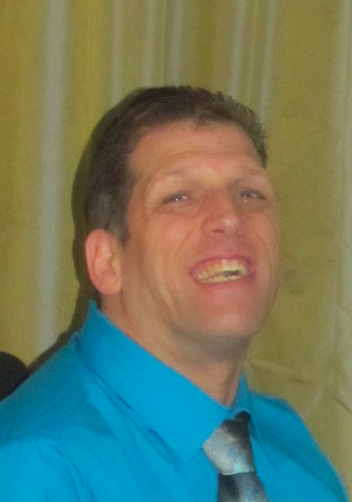
Todd Hutchinson
The State University of New York At Buffaloth1545css@gmail.com
I am using ECO2 and helping UB Project Converse AAC.
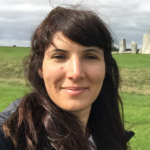
Seray Ibrahim
King’s College Londonseray.ibrahim@kcl.ac.uk
I am a Postdoctoral Researcher of Digital Health at the Department of Informatics, King’s College London. My research focuses on the design and use of technologies for communication, learning and mental health. Specifically, in recent projects, I have investigated digitally-mediated in-person communication for children with severe speech and physical impairments, personalised and adaptive learning technologies for the classroom and family-centred mental health interventions. To achieve this, I utilise user-centred design and ethnographic methods to rethink the role that digital technologies can take in people’s everyday lives. I have published my work at top tier HCI conferences (e.g. CHI, IDC; receiving best paper and best paper honorable mention awards), Communication Matters (the UK chapter of ISAAC) and Disability and Society Journal.
Ibrahim, S., Vasalou, A. & Clarke, M. (2018) Design Opportunities for AAC and Children with Severe Speech and Physical Impairments. Proceedings of the 2018 CHI Conference on Human Factors in Computing Systems. ACM. https://doi.org/10.1145/3173574.3173801
Ibrahim, S., Vasalou, A. & Clarke, M. (2020) Can Design documentaries Disrupt Design for Disability? (pp. 96-107). Proceedings of the ACM Interaction Design and Children Conference 2020. https://doi.org/10.1145/3392063.3394403
Ibrahim, S. (2020). Communication and Non-Speaking Children with Physical Disabilities: Opportunities and Reflections from Design-Oriented Research. Doctoral Dissertation. UCL.
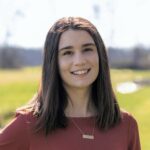
Jordynn Koroschetz
The State University of New York At Buffalojordynnk@buffalo.edu
I completed a graduate thesis under the mentorship of Jeff Higginbotham related to the impact of composition delay on augmentative communication talk-in-interaction. I am currently working to expand the results of my thesis with a focus on sequential misalignment.
Koroschetz, J. & Higginbotham, J. (2021, November 18-20). The impact of composition delay: Inserted utterances and sequential misalignment [Virtual conference session]. ASHA 2021: Rising United, Washington, DC, United States.
Higginbotham, J., Erickson, K., Geist, L., Satchidanand, A., Koroschetz, J. (2021, January 25-28 & February 1-4). Interaction delay and breakdown in AAC: Problems to be solved [Virtual conference session]. ATIA 2021: AT Connected.
Koroschetz, J. (2020). The impact of composition delay in augmentative communication talk-in-interaction (Publication No. 28090991) [Master’s thesis, University at Buffalo]. ProQuest Dissertations and Theses Global.
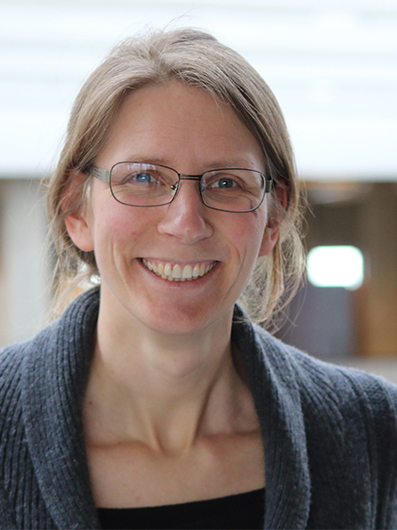
Antonia Krummheuer
Aalborg Universityantonia@hum.aau.dk
I am sociologist with a strong interest in the detailed analysis of assistive practices using video/ethnography and multimodal interaction analysis. I aim to understand the various ways of how we use our bodies, materials and the environments to express our selves and take up activities of others to participate and collaborate in interaction with each other. I am interested in the situated co-construction of meaning, agency and identity that is essential for participation and collaboration in social settings of the everyday life. Furthermore, I enage in research for understanding, informing and co-creating the use, development and deployment of assistive technologies, such as social robots. I find it essential to point out the social and interactional side of technologies and aim to find ways how this can be included in the design and deployment of technologies for and in everyday life settings.
Krummheuer, A. L. (2023). Practice-based robotics: How sociology can inform the development of social robots. I F. Muhle (red.), Soziale Robotik: Eine sozialwissenschaftliche Einführung (s. 117-136). De Gruyter. https://doi.org/DOI: 10.1515/9783110714944-006
Krummheuer, A. L. (2021). Unmet wishes: A multimodal interaction analysis of the rejection of choice in assisted shopping interactions. Journal of Interactional Research in Communication Disorders, 10(1), 5-29. https://doi.org/10.1558/jircd.19315
Krummheuer, A. L., Rehm, M., & Rodil, K. (2020). Triadic Human-Robot Interaction. Distributed Agency and Memory in Robot Assisted Interactions. I Companion of the 2020 ACM/IEEE International Conference on Human-Robot Interaction (s. 317-319). Association for Computing Machinery. https://dl.acm.org/doi/10.1145/3371382.3378269

Sasha Kurlenkona
New York Universityask689@nyu.edu
Sasha Kurlenkova (she, he) is a researcher of gaze-based communication and repair practices of children and young adolescents with cerebral palsy and their families in Russia. In particular, she’s been researching creative meaning-making activities inside one family from Krasnoyarsk who have been effectively relying on gaze-based gestures, as well as an eyetracking device and semiotic resources of the computer screen to co-construct utterances together.
Her PhD dissertation now in progress at the Department of Media, Culture, and Communication, New York University, combines ethnographic and video-analytic methods to study issues of care and technological experiences of families raising children with speech disabilities in Russia, language ideologies and multimodal communication, as well agency, communicative competencies and strategies of children using gaze to talk.

Pam Mathy
The State University of New York At Buffalopmathy@buffalo.edu
Pamela Mathy, PhD, CCC-SLP is a Research Associate in the Communication and Assistive Device Laboratory CADL in the Department of Communication Disorders and Sciences at the University of Buffalo and a Clinical Professor Emeritus in the Department of Communication Sciences and Disorders at the University of Utah. During her 45-year career, her clinical work, research, and teaching has focused on individuals with complex communication needs who may benefit from Augmentative and Alternative Communication (AAC) including people with a wide range of diagnoses such as amyotrophic lateral sclerosis and other acquired neurogenic disorders and developmental disorders such as cerebral palsy and autism spectrum disorders. Her research and clinical work in AAC have focused on intervention and research to understand how people with complex communication needs use AAC technologies and how these technologies help or hinder their ability to engage fully in social interactions in their daily lives.
Mathy, P., Yorkston, K. & Guttman, M. Amyotrophic lateral sclerosis. In D. R. Beukelman, K. Yorkston & J. Reichle (Eds.) Augmentative communication for adults with neurogenic and neuromuscular disabilities. 2000; 183-231. Baltimore: Paul Brookes Publishing Company.
Higginbotham, D.J., Mathy, P., & Yoder, D.E. Studying conversa¬tions of augmen¬tative communication system users. In L. Bernstein (Ed.), The vocally impaired: Clinical practice and research., 1988; 265-294. Philadelphia, PA: Grune & Stratton.
Mathy, P. & Yoder, D.E. Future directions in augmentative communication. In S. Blackstone (Ed.), Augmentative communication: An introduction. 1986; 471-494 Rockville, MD: American Speech-Language and Hearing Association.
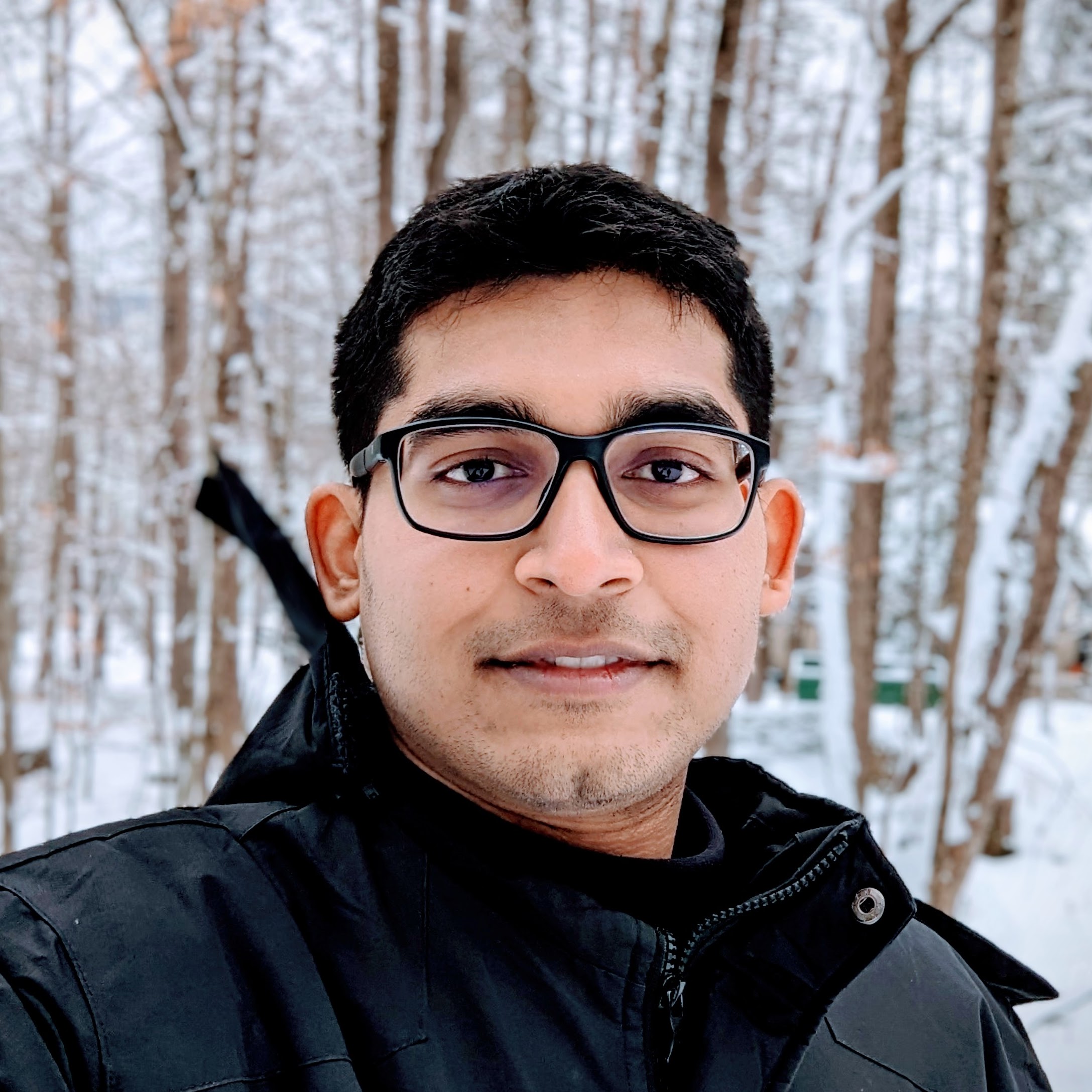
Sayantan Pal
The State University of New York At Buffalospal5@buffalo.edu
I am a first-year CSE Ph.D. student at SUNY Buffalo, and my works are in NLP, especially, conversational AI. I am passionate about improving the lives of people with ALS through augmentative and alternative communication (AAC) technologies. I have been working in this field for just a few months now, but I am already deeply committed to improving the lives of people with complex communication needs through technology. Technology can play a vital role in improving the quality of life for those with communication challenges. I am interested in developing AI-based chatbots and other digital agents to assist with semi-automated conversation for AAC users. I am committed to creating user-friendly, reliable, and practical tools.
(Ongoing) Enhancing AAC for ALS Users
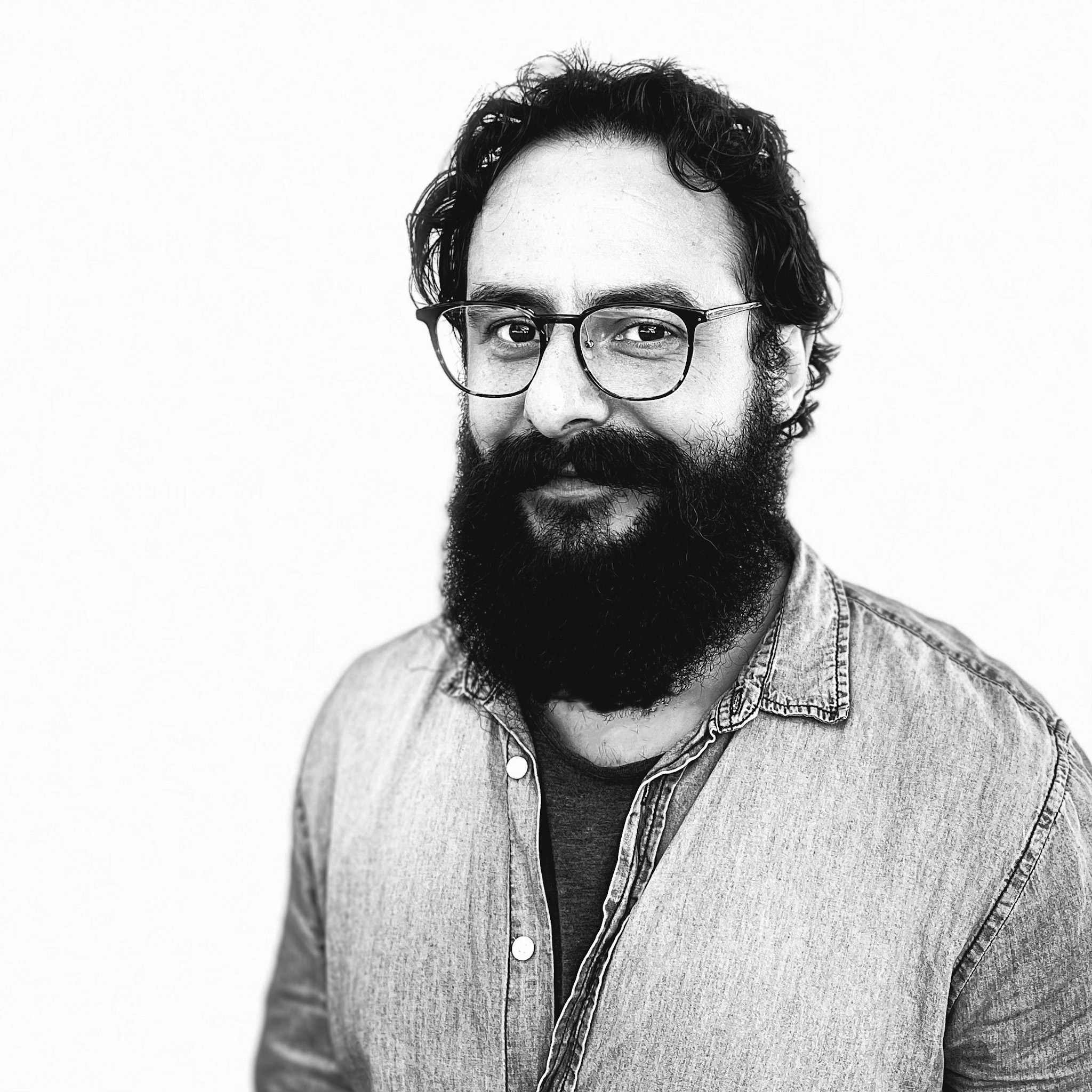
Francesco Possemato
The State University of New York At Buffalo, Macquarie Universityfpossema@buffalo.edu
By using the methods of Conversation Analysis and Interactional Linguistics, my research addresses language and social interaction in a variety of contexts. I have worked on the Conversational Interaction in Aboriginal and Remote Australia (CIARA) project and am currently a Postdoctoral Associate in the Communication and Assistive Device Laboratory (CADL) at the State University of New York (SUNY) at Buffalo. I am an Honorary Research Fellow at Macquarie University, where I am the co-investigator for the Aphasia, correction, and micro-collaboration project addressing interactions involving people with aphasia. I am also the external investigator for the Students’ flourishing through Italian classroom interaction project (La Trobe University). While in Sydney I have been the coordinator for the Conversation Analysis in Sydney (CAIS) group – Australasian Institute of Ethnomethodology and Conversation Analysis (AIEMCA). I have published on Italian L2 teaching, atypical interaction, and pragmatic typology.
Barnes, Scott, and Francesco Possemato. 2020. “Shifting Granularity: The Case of Correction and Aphasia.” In Atypical Interaction: The Impact of Communicative Impairments within Everyday Talk, edited by Ray Wilkinson, John P. Rae, and Gitte Rasmussen, 225–55. Cham: Springer International Publishing.
Possemato, Francesco, Joe Blythe, Caroline de Dear, Josh Dahmen, Rod Gardner, and Lesley Stirling. n.d. “Using a Geospatial Approach to Document and Analyse Locational Points in Face-to-Face Conversation.” Language Documentation and Description.
Barnes, S. & Possemato, F. (forthcoming). Multimodal Analysis. In M. J. Ball, M. R. Perkins, N. Müller, & S. Howard (Eds.) Handbook of Clinical Linguistics – 2nd Edition. Blackwell Publishing.

Graham Pullin
University of Dundeeg.pullin@dundee.ac.uk
Graham Pullin is a designer and Professor of Design and Disability at DJCAD (Duncan of Jordanstone College of Art and Design) at the University of Dundee, Scotland, United Kingdom. Here he co-founded Studio Ordinary, a meeting of critical disability studies and design research.
As part of a Wellcome Trust humanities collaboration ‘Imagining technologies for disability futures’, Studio Ordinary is critically re-imagining augmentative communication with mentors who use AAC. Researchers include jewellery and product designer Katie Brown, illustrator Johanna Roehr, interaction designer Fin Tams-Gray and augmented communicator Jamie Preece.
Graham’s mid-career PhD, ’17 ways to say yes’, explored a lack of expressive tone of voice in AAC – and the difficulty in even discussing a quality that even phoneticians struggle to define. In this practice-led research, critical objects including the collection ‘Six Speaking Chairs’, designed with Andrew Cook, were created to provoke discussion across disciplines and with people who use AAC.
We will be using design methods in this way again: seeking to change the conversation around the future of AAC. This includes challenging an ableist assumption that the augmented communicator should meet the expectations of their conversational partners. How might AAC be conceived more in terms of mutual social interaction?
Graham is the author of ‘Design meets disability’ (Japanese edition: O’Reilly, 2022; English edition: MIT Press, 2009). Previously he was a studio head at the design group IDEO.
‘Designing Interaction, Voice and Inclusion.’ Pullin, Graham, Treviranus, Jutta, Patel, Rupal, and Higginbotham, Jeff. 2017. Augmentative and Alternative Communication 33:3, 139–148. Abingdon, UK: Taylor & Francis.
‘Super normal design for extra ordinary bodies: a design manifesto.’ Pullin, Graham. 2018. In Manifestos for the future of critical disability studies edited by Mike Kent, Katie Ellis, Rachel Roberson and Rosemarie Garland-Thomson. Abingdon, UK: Routledge.
’17 ways to say yes: toward more nuanced tone of voice in AAC and speech technology.’ Pullin, Graham, and Shannon Hennig. 2015. Augmentative and Alternative Communication 31:2, 170–180. London: Informa. (Gold open access).

Nancy Quick
University of North Carolina at Chapel Hillnancy_quick@med.unc.edu
My research interests in AAC are related to improving the language and literacy outcomes of students with significant cognitive disabilities and complex communication needs. To that end, I have used microanalysis to examine interactions with this population during literacy instruction to explore teacher behaviors that promote student communication efforts and student learning.
Quick, N., Hatch, P. & Erickson, K. (in press – June 2023). Conversation analysis of shared reading with students who have significant support needs. Journal of the American Academy of Special Educators, (32 pages).
Quick, N., Geist, L., Erickson, K. (manuscript in progress). Applying microanalysis to the evaluation of multicomponent interventions.
Quick, N., Geist, L., Erickson, K. (manuscript in progress). Creating space for AAC composition in classrooms: Calling on and coming back.

Brian Roark
Googleroarkbr@gmail.com
I am a computational linguist who spent 9 years as faculty at OHSU, where I had the pleasure of collaborating on a number of AAC projects, including on the topic of brain-computer interfaces, with Melanie Fried-Oken and colleagues. Since joining Google as a research scientist in 2013, I have mainly worked on topics related to speech recognition, text entry and writing systems, but have relatively recently managed to foster a sporadic collaboration externally with a distributed team working on updating the Dasher text entry system. That latter project led a colleague and I to open-source a language model serving software library, which I also sporadically maintain. My interests lie in methods for using predictive models within text entry (including for AAC) and for supporting diverse writing systems within such interfaces, such as, e.g., Brahmic scripts used widely in South Asia.
Brian Roark and Alexander Gutkin. 2022. Design principles of an open-source language modeling microservice package for AAC text-entry applications. In Proceedings of the ACL Workshop on Speech and Language Processing for Assistive Technologies (SLPAT), pp. 1–16. https://aclanthology.org/2022.slpat-1.1/
Umut Orhan, Hooman Nezamfar, Murat Akcakaya, Deniz Erdogmus, Matt Higger, Mohammad Moghadamfalahi, Andrew Fowler, Brian Roark, Barry Oken and Melanie Fried-Oken. 2016. Probabilistic simulation framework for EEG-based BCI design. In Brain-Computer Interfaces, 3(4):171-185. http://www.tandfonline.com/eprint/dZhHMnsGKVRpuZ76Gwpt/full
Brian Roark, Melanie Fried-Oken and Chris Gibbons. 2015. Huffman and Linear Scanning Methods with Statistical Language Models. In Augmentative and Alternative Communication, 31(1):37-50. http://www.tandfonline.com/eprint/pcNYMkWWcCSPRz8kcnNN/full

Antara Satchidanand
The State University of New York At Buffalosatchida@buffalo.edu
My current research interested is repair in augmented conversation. I have also spent time studying issues of delay and related sequencing problems is AAC related contexts and robot- assisted surgery.
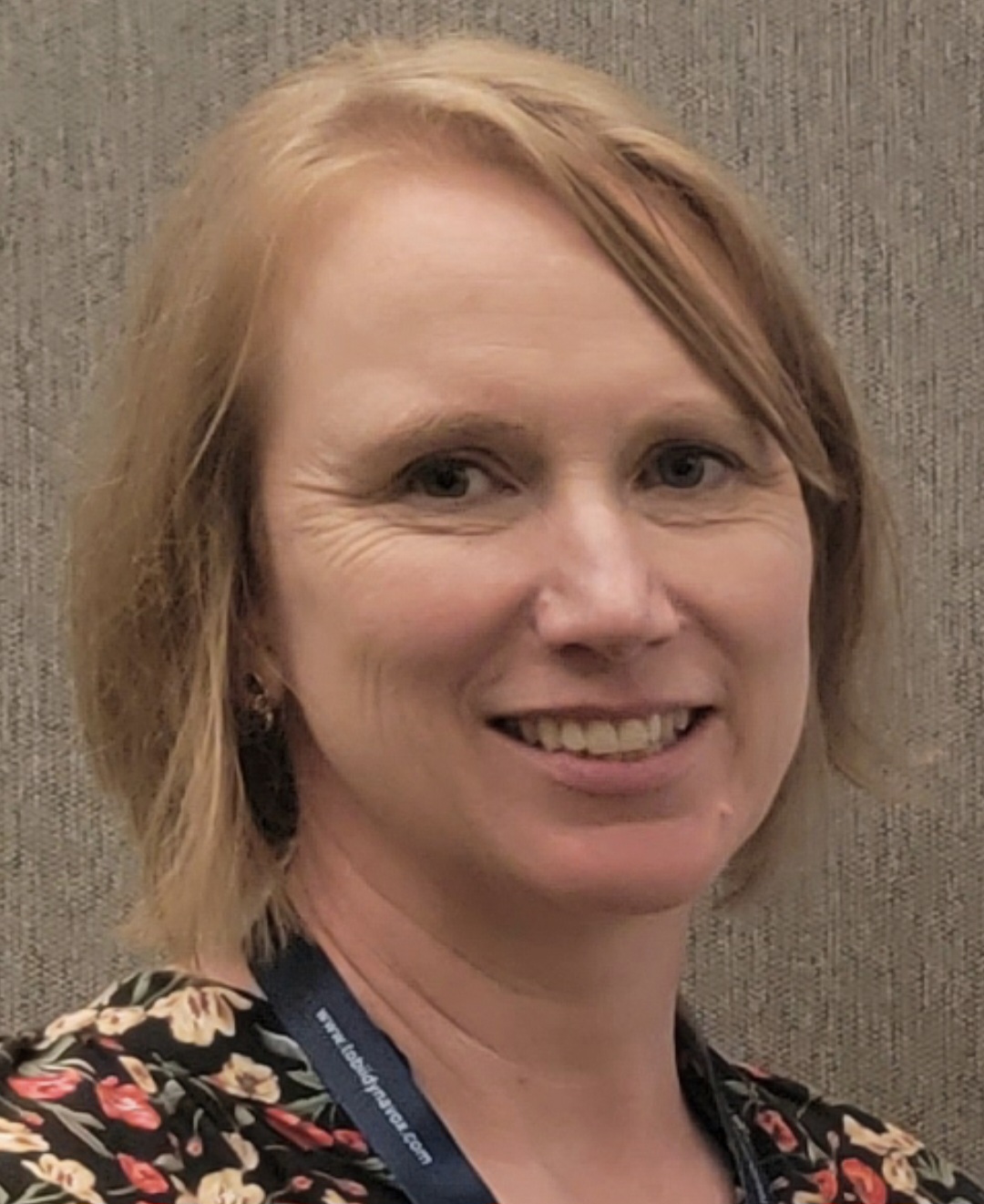
Dawn Sowers
Pennsylvania State Universitydjs6974@psu.edu
I am an SLP with over 25 years of experience in AAC with an emphasis on those individuals who also have motor impairments. I recently completed my PhD at Penn State with Dr. Krista Wilkinson and currently work as the AAC Research and Clinical Outreach Coordinator under Dr. Janice Light. My dissertation was on the effects of visual feedback on visual search while using eye tracking. My interests largely focus on AAC system design for alternative access and how it intersects with the use of language including learning and complexity of language as well as social interactions.
Coburn, K., Jung, S., Ousley, C., Sowers, D. J., Wendelken, M., Wilkinson, K. (2021). Centering the family in their system: A framework to promote family-centered AAC service. Augmentative and Alternative Communication.
McCarty, T., Sowers, D. J., Wolf, S., & Wilkinson, K.M., (2021). A preliminary study of the relation of visual attention to stimulus complexity and functional vision in individuals with cortical visual impairment: Implications for AAC. Perspectives of the ASHA Special Interest Groups.
Sowers, D. J., & Wilkinson, K. M. (2023). Demands associated with an augmentative and alternative communication system in relation to alternative forms of access for individuals with motor impairments. American journal of speech-language pathology, 1-18.

Rohini Srihari
The State University of New York At Buffalorohini@buffalo.edu
I’m working with Prof Higginbotham on an effort to integrate chatbots into an AAC device.
Archita Pathak, Rohini Srihari and Nihit Natu. Disinformation- Analysis and Identification Computational and Mathematical Organization Theory, Springer June 2021.
S. Saha, S. Das, and R. Srihari, “Stylistic Response Generation by Controlling Personality Traits and Intent,” in Proceedings of the ACL 4th Workshop on NLP for Conversational AI, Dublin, Ireland, May 2022, pp. 197–211.
Souvik Das, Sougata Saha, Rohini K. Srihari, Using Multi-Encoder Fusion Strategies to Improve Personalized Response Selection, in Proceedings of COLING 2022, October 2022, S. Korea.

Finley Tams-Gray
University of DundeeFTamsgray001@dundee.ac.uk
Fin is a graduate of DJCAD’s Digital Interaction Design course. His recently concluded honours project focused on creating zines (small DIY publications) as an analogue form of creative expression for AAC users and communication passport owners, to provide individuals with an opportunity to creatively express themselves and to self-advocate. This project, titled ‘Book of [blank]’, was created using insights from a mentor and close friend of Fin’s and centred on ownership, authenticity, creativity and self-expression. He is passionate about mentor-directed research and social co-design. His personal design interests involve tangibility, authorship and subverting the norm.
Fin is doing a Research Internship on the ‘Prototyping Ordinary Communication Futures’ work package in Studio Ordinary, DJCAD, University of Dundee, working closely with Katie Brown, Graham Pullin and Johanna Roehr since July 2022. This work package is a part of the Welcome Trust funded ‘Imagining technologies for Disability futures’ project, exploring arts and humanities, design, robotics and engaging with users of assistive technologies to increase understanding of how disability and embodiment are currently represented and used, and the ways in which technology can enhance lives in the future.
Fin’s role on the project is to build experience prototypes (which will need to be in some ways interactive, yet not fully working) of a collection of conversation ‘utensils’, first exploring how different interactions could be realised using embedded technologies such as Raspberry Pi and Arduino. His hope is to develop engaging and thoughtful interactive objects that contribute to important conversations about possible futures of augmented communication, socially and technologically.

Jutta Treviranus
Ontario College of Art and Design Universityjtreviranus@ocadu.ca
Jutta Treviranus is the Director of the Inclusive Design Research Centre (IDRC) and professor in the faculty of Design at OCAD University in Toronto. Jutta established the IDRC in 1993 as the nexus of a growing global community that proactively works to ensure that our digitally transformed and globally connected society is designed inclusively. Dr. Treviranus also founded an innovative graduate program in inclusive design at OCAD University. Jutta is credited with developing an inclusive design methodology that has been adopted by large enterprise companies, governments, and public sector organizations internationally. She has worked in Augmentative and Alternative Communication for close to four decades and is currently exploring the use of community-led language models and natural language processing in support of communication fluency and vocabulary expansion.
Pullin, G., Treviranus, J., Patel, R., & Higginbotham, J. (2017). Designing interaction, voice, and inclusion in AAC research. Augmentative and Alternative Communication, 33(3), 139-148.
Treviranus, J., Roberts, V., (2003). “Supporting competent motor control of AAC systems”in Communicative Competence , David Beukelman, Joe Reichle editors, Brookes Publishing.
Treviranus, J. (1994). Mastering Alternative Computer Access: The role of understanding, trust and automaticity. Assistive Technology: the official journal of RESNA, 6(1), 26-42.

Stephanie Valencia
Carnegie Mellon Universitysvalenci@andrew.cmu.edu
Stephanie Valencia is a Ph.D. candidate at the Human-Computer Interaction Institute at Carnegie Mellon University. Her research focuses on increasing conversational agency in augmentative and alternative communication (AAC) devices that support communication for users with motor and speech disabilities. She uses participatory design to explore how different design materials such as AI and embodied expressive objects can be used to create agency-increasing AAC systems and builds and deploys these systems to evaluate their impact. Many individuals who use speech-generating devices to communicate encounter social constraints and barriers that reduce their agency in conversation including how much they can say, how they can say it, and when they can say it. Stephanie’s research proposes agency as a design framework that can be used to generate accessible communication experiences and center the perspectives of people with disabilities in the design process of new AAC systems.
Conversational Agency in AAC – https://dl.acm.org/doi/abs/10.1145/3313831.3376376
Codesigning Socially Assistive Sidekicks for Motion-based AAC – https://dl.acm.org/doi/pdf/10.1145/3434073.3444646
Aided Nonverbal Communication through Physical Expressive Objects – https://dl.acm.org/doi/abs/10.1145/3441852.3471228
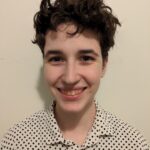
Cas Vecchio
The State University of New York At Buffalocrvecchi@buffalo.edu
Cas Vecchio is a Master’s student at the University of Buffalo, completing a Master’s thesis with the Communication and Assistive Device Laboratory (CADL), which centers around speech-generating device (SGD)-mediated self-initiated repair. Cas’s interests include social interaction in communication, multi-modal communication, and how the principles of multi-modal communication can be used in therapy to give clients access to all available modalities to promote successful communication.

Keith Vertanen
Michigan Technological Universityvertanen@mtu.edu
Dr. Vertanen is an expert on text input by people with diverse abilities. He contributes to the open-source AAC text entry interfaces Dasher, Nomon, and BciPy. He has been a consultant for Tobii Dynavox, helping to improve gaze-based text input. He is a recipient of a National Science Foundation (NSF) CAREER award to investigate context-aware AAC text input.
Kristensson, P.O., Mjelde, M., Vertanen, K. Understanding Adoption Barriers to Dwell-Free Eye-Typing: Design Implications from a Qualitative Deployment Study and Computational Simulations. In Proceedings of the ACM International Conference on Intelligent User Interfaces (IUI 2023).
Bonaker, N., Nel, E.M., Vertanen, K., Broderick, T. A Performance Evaluation of Nomon: A Flexible Interface for Noisy Single-Switch Users. In Proceedings of the ACM Conference on Human Factors in Computing Systems (CHI 2022).
Adhikary, J., Vertanen, K. Accelerating Text Communication via Abbreviated Sentence Input. Proceedings of the Joint Conference of the 59th Annual Meeting of the Association for Computational Linguistics and the 11th International Joint Conference on Natural Language Processing (ACL 2021).
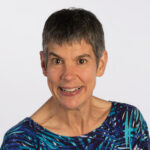
Annalu Waller
University of Dundeea.waller@dundee.ac.uk
Annalu Waller PhD is Professor of Human Communication Technologies at the University of Dundee in Scotland. She directs the Dundee Augmentative and Alternative Communication (AAC) research Group and has worked in the field of AAC since 1985, designing communication systems for and with nonspeaking individuals. Her primary research areas are human centred computing, natural language processing, personal narrative and assistive technology. In particular, she focuses on empowering end users, including disabled adults and children, by involving them in the design and use of technology. Professor Waller was awarded an OBE in the Queen’s New Years Honours List in 2016 for services to people with Complex Communication Needs and is an Honorary Fellow of the Royal College of Speech and Language Therapists.
Kristensson, PO, Lilley, J, Black, R & Waller, A 2020, A Design Engineering Approach for Quantitatively Exploring Context-Aware Sentence Retrieval for Nonspeaking Individuals with Motor Disabilities. in CHI 2020 – Proceedings of the 2020 CHI Conference on Human Factors in Computing Systems: Proceedings of the 2020 CHI Conference on Human Factors in Computing Systems., 398, Conference on Human Factors in Computing Systems – Proceedings, Association for Computing Machinery, New York, CHI 2020, Oahu, Hawaii, United States, 25/04/20. https://doi.org/10.1145/3313831.3376525
Waller, A 2019, ‘Telling Tales: Unlocking the Potential of AAC Technologies’, International Journal of Language and Communication Disorders, vol. 54, no. 2, pp. 159-169. https://doi.org/10.1111/1460-6984.12449
Porayska-Pomsta, K, Alcorn, A, Avramides, K, Beale, S, Bernardini, S, Foster, M-E, Frauenberger, C, Good, J, Guldberg, K, Keay-Bright, W, Kossyvaki, L, Lemon, O, Mademtzi, M, Menzies, R, Pain, H, Rajendran, G, Waller, A, Wass, S & Smith, TJ 2018, ‘Blending Human and Artificial Intelligence to Support Autistic Children’s Social Communication Skills’, ACM Transactions on Computer-Human Interaction, vol. 25, no. 6, 35. https://doi.org/10.1145/3271484
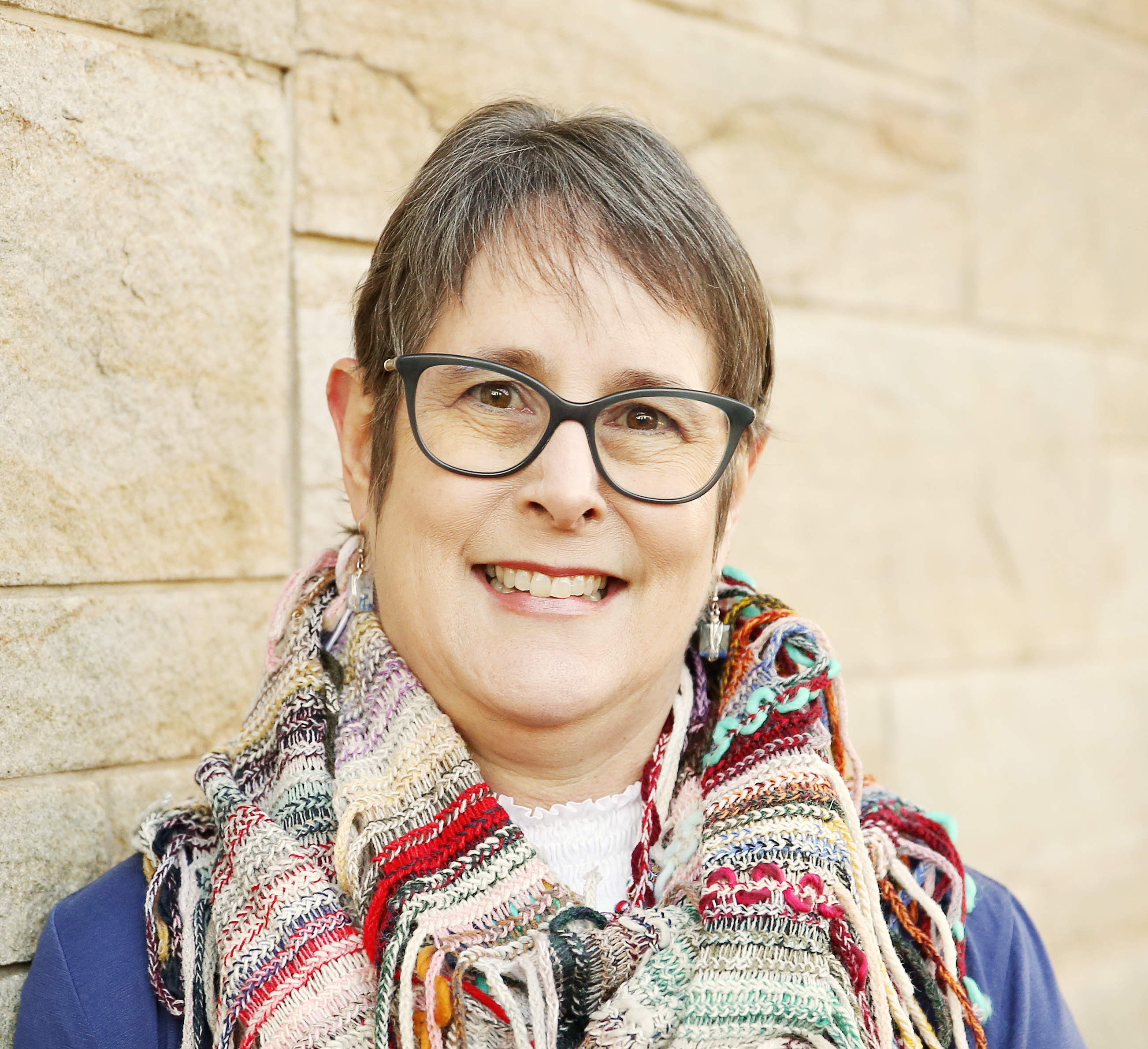
Krista Wilkinson
Pennsylvania State Universitykmw22@psu.edu
I have been working in the area of AAC for 30+ years. My most recent work has focused on improving the design of AAC systems to better match the visual and motor processing skills of folks who use them.
Wilkinson, K. M., Gilmore, R., & Qian, Y. (2022). Judicious arrangement of symbols on an AAC display optimizes visual attention and speed of responding by individuals with Down syndrome. Journal of Speech, Language and Hearing Research, 65, 710-726.
Wilkinson, K. M., & Wolf, S. (2021). An in-depth case description of gaze patterns of an individual with cortical visual impairment to stimuli of varying complexity: Implications for AAC design. Perspectives of the American Speech-Language-Hearing Association, 6, 1591-1602. https://doi.org/10.1044/2021_PERSP-21-00111
Wilkinson, K. M., & Bennett, R. (2021). Impact of the design of visual communication supports on social interaction by individuals with Down syndrome. Journal of Interactional Research in Communication Disorders, 10.1, 30-46. doi : 10.1558/jircd.19316
